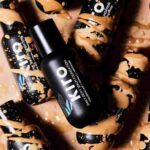Table of Contents
Do you find yourself debating whether to use a face serum or a face moisturiser? We understand. It might be difficult to determine which is ideal for your skin type and regimen. But don’t worry, we’ve got the lowdown on what sets each apart so you can make an informed choice. Let’s begin with a facial serum. This product has a light feel and is often available in oil or liquid form. Its major function is to help people distinguish between face serums and face moisturisers. After all, they both aim to provide your skin with the moisture it requires appearing its best. But what is the distinction between them, and how should you employ them in your daily life?
While both face serums and face moisturisers aim to hydrate your skin, there are some significant variations between them. The most noticeable distinction is consistency. Face serums are thin, watery, and light in texture, but face moisturisers are thicker, creamier, and heavier. The varying components needed to produce each product account for the variance in consistency.
Face serums are typically made with high concentrations of active ingredients such as vitamin C, peptides, and antioxidants. These active ingredients are more easily absorbed into the skin, which is why face serums are usually more expensive than face moisturizers. The high concentrations of active ingredients in face serums can help to address specific skin concerns, such as wrinkles, sun damage, and acne.
Face moisturisers, on the other hand, contain substances like hyaluronic acid and glycerin that helps to keep moisture in the skin. Emollients, which aid to soften and smooth the skin, are frequently included in face moisturisers. Face moisturisers, while not containing the same active ingredients as face serums, are nonetheless an important element of a skincare routine.
So how should you use face serums and moisturisers in your everyday skincare routine?
To begin, keep in mind that face serums should be administered before face moisturisers. Face serums are meant to permeate the skin, however face moisturisers might function as a barrier, preventing the serums from being absorbed. After using your face serum, you can apply your face moisturiser.
It’s also essential to remember that varying amounts of face serums and moisturisers should be utilised. Face serums should be applied thinly and evenly, but face moisturisers should be applied thickly. This will guarantee that your skin receives hydration without getting overly oily or greasy.
Finally, it’s important to remember that while face serums and face moisturisers can both be beneficial to your skin, they are not interchangeable. While face serums can help to address specific skin concerns, face moisturizers are more of a preventative measure. That is why using both products in your skincare routine is important.


